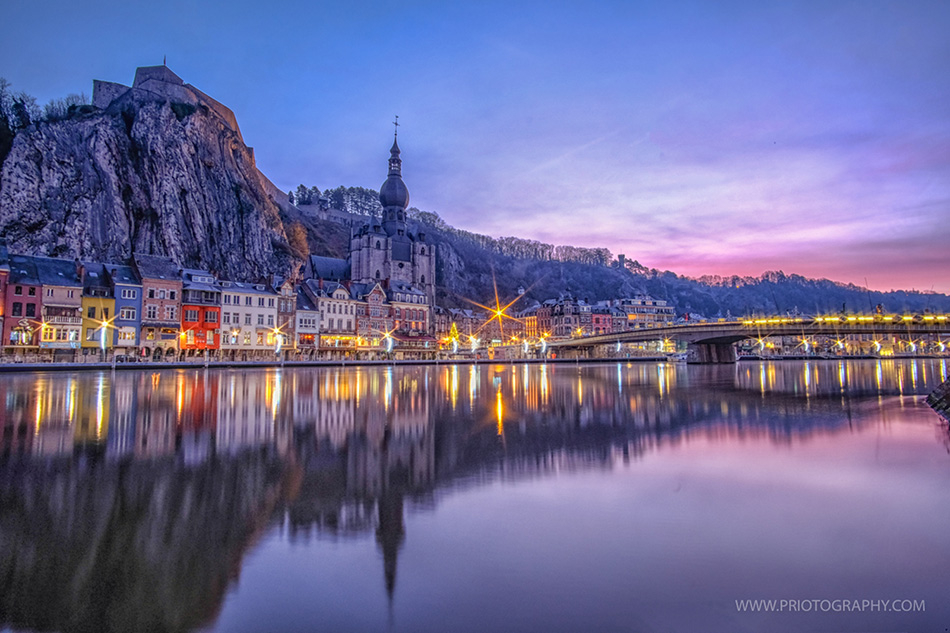Why shooting during the Blue Hour? – Dinant from Dusk to Dawn
This article is made to answering questions of why most of my landscape-cityscape photos are taken during the blue hour. My last photoshoot in Dinant was taken as an example regarding this subject.
Still using my trustworthy camera Fujifilm X-T1 and the 12mm f/2.0 Samyang lens as a perfect combination, capturing moments in the beautiful scenery of Dinant, Belgium.
About photo location
Dinant is a Walloon city, the French-speaking region of Belgium and municipality located on the River Meuse, in the Belgian province of Namur.
It’s about 90 km South-East from Brussels.
People know that Dinant is also the birthplace of Adolphe Sax, who invented the saxophone. Therefore you will find a lot of saxophone monuments around the city.
What is the blue hour?
There is a reason, why good photography is all about light and golden timing/moment. Light makes photography. Embrace light. Admire it. Love it. But above all, know light.

On a clear day, without clouds and rain, the transition between day and night can be a colorful scene, with the indirect sunlight tinting the sky yellow, orange, red, and blue, sometimes magenta.
The blue hour refers to the period of twilight when the Sun is so far below the horizon that the blue light wavelengths take place over others spectrum.
This event is just before the appearance of the sun or just after it, when the light is soft enough to emphasize most of the dark of the scene, and yet not so dark that it necessitates the use of an additional light source. A dramatic and dynamic photo might be there, coming from the combination of the blue colour of the sky scatters by only the short-wave blue light, reflected to the atmosphere and the artificial light coming from the lamp on the streets, light from houses etc.
Why is it blue?
The different colors of twilight are created by an atmospheric scattering effect. The angle of the Sun above or below the horizon changes during the transition between day and night, the Earth’s atmosphere filters out different wavelengths of lights and leaving the remaining rays of light to color the sky in ever-changing hues. Therefore you will see a different sky color during that phase.
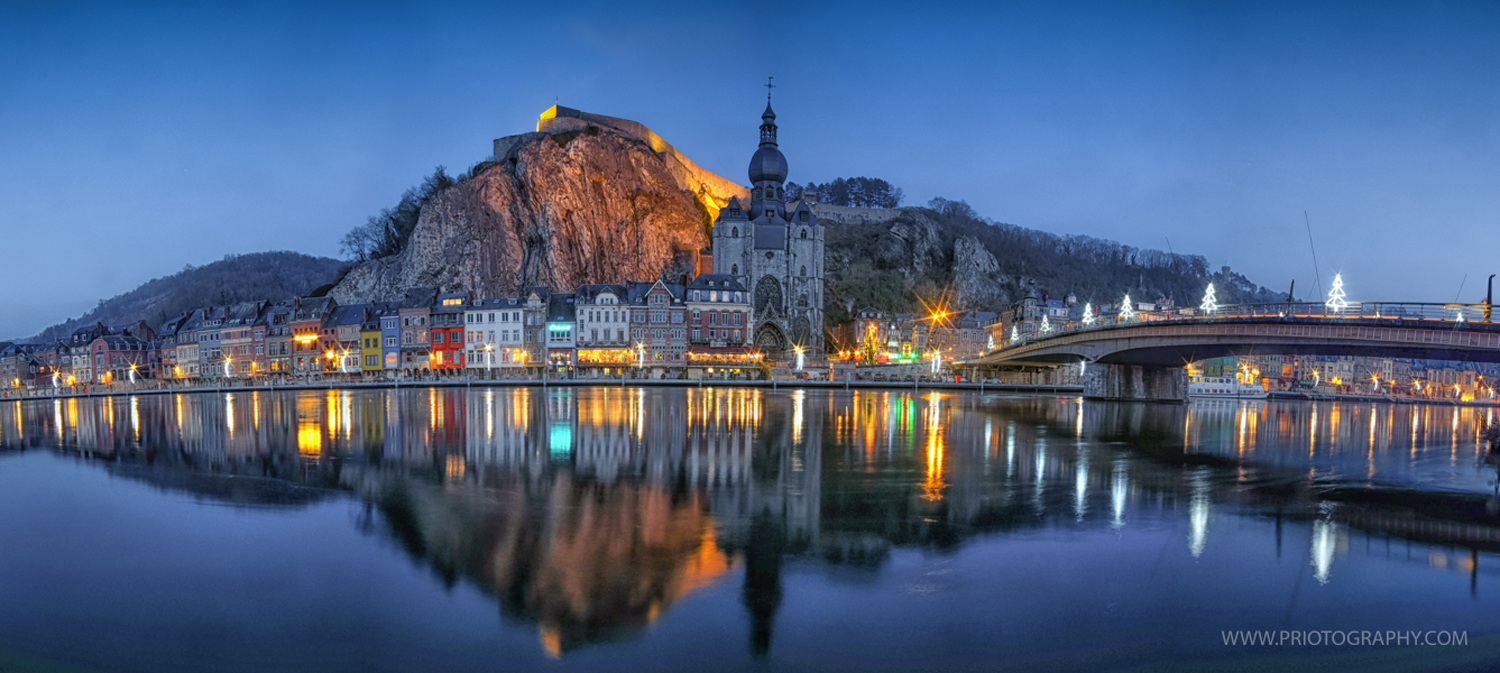
However, during the blue hour, the Sun is so far below the horizon (some books said between 4° to 6° from the horizon) that the atmosphere scatters only the short-wave blue light, sending it back to Earth. Meanwhile, the longer red wavelengths pass through it and into space. Even though it sounds like theoretically, this phenomenon is actually used by us, as light hunters – photographers – to capture the moment. Taking the benefit of the blue hour.
It really depends on the geographical location and the season, the duration and starting of blue hour might vary.
This is why it is so important to thoughtfully plan for a right timing when your travel abroad. Predicting them is compulsory in travel photography.
You’d be ready and your photo equipment as well, waiting for the perfect timing.
Tips and Tricks
Planning: time planning when you’ll arrive at which position would be the best location for taking pictures of beautiful scenery. Use Google maps for finding the best position or googling photos of the local photo that might inspire you. The timeanddate.com Sun Calculator can be used to find out when the Sun will be at just the right angle at your shooting location.
Timing: a perfect timing might come anytime, but the golden rule as follows:
- Sunrise: during this part of the day the Blue Hour starts around 30 minutes prior to sunrise.
- Sunset: during the sunset, the Blue Hour roughly starts 10 to 15 minutes after the sun has set.
- If you get no clear sky, some motion of clouds would make your scenery even more dramatic but cloud means the duration of blue hour might be shorter as it used to be, since cloud would make your sky so dark and so dense.
This picture was taken in 3 different times: at noon (about 2 hours before the blue hour), in blue hour (sunset), and golde time in sunrise (the day after) in the same location. You will see the dramatical color spectrum, different for each phase.
Artificial lighting of buildings plays an important role in urban and city photography, as you might see.
Equipment: Tripod is a must!! And don’t forget the tripod mounting plate at home! Make sure that significant equipment is with you before you decide to take blue hour scenery. Tip: I’m using a universal arca-swiss mounting system for your tripod.
Location: Try different locations during the blue hour. It’s a bit tricky since the blue hour might be short, but find a perfect location and its variations will cost you a wonderful view. Here as an example, I took different locations in the same period of time: sunrise. (you need to be fit to run catching a lovely scene in different locations ? )
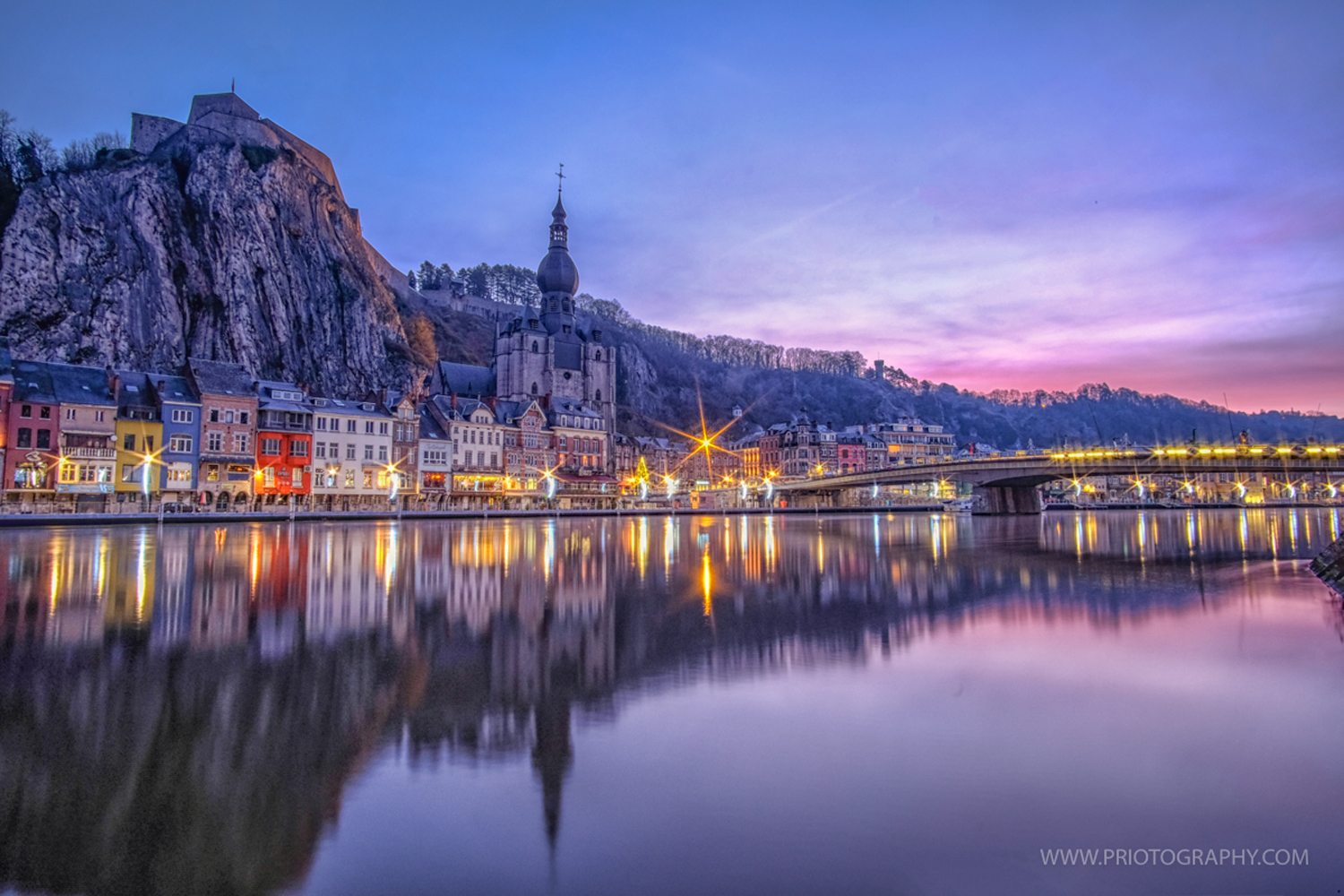

Local element: Try to include the local element into your scenery, like a statue, a bridge, etc. In this example, I tried to take the picture under the bridge and capture all elements that are unique from Dinant, included in the photo.
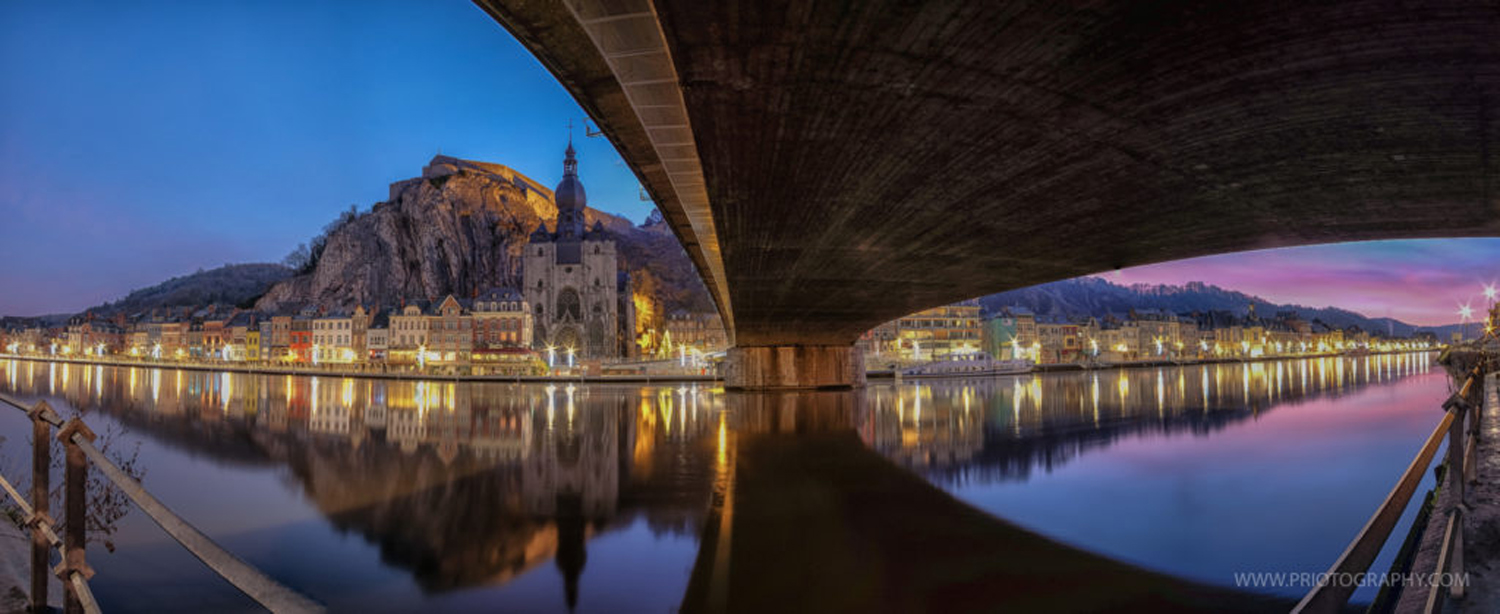
So, happy hunting!
JOIN US! SUBSCRIBE TODAY THE FUJI X PASSION MAGAZINE
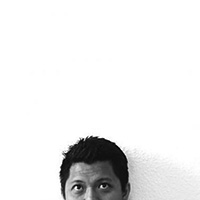
A Hamburg – Germany, based editorial and wedding photographer, specialized in capturing people and moments full of mood and emotions. His passion for traveling reveals a part of him catering landscape and also cityscape, with colourful breathtaking images. He believes that creativity has no boundary as an inspiration into his work.

